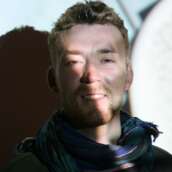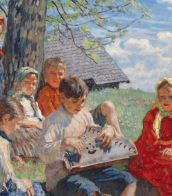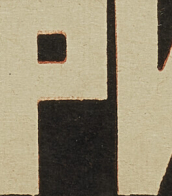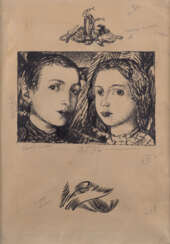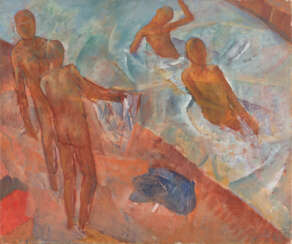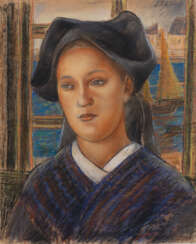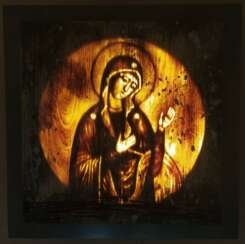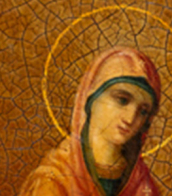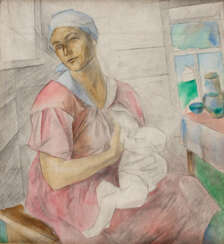petrov-vodkin
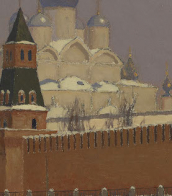
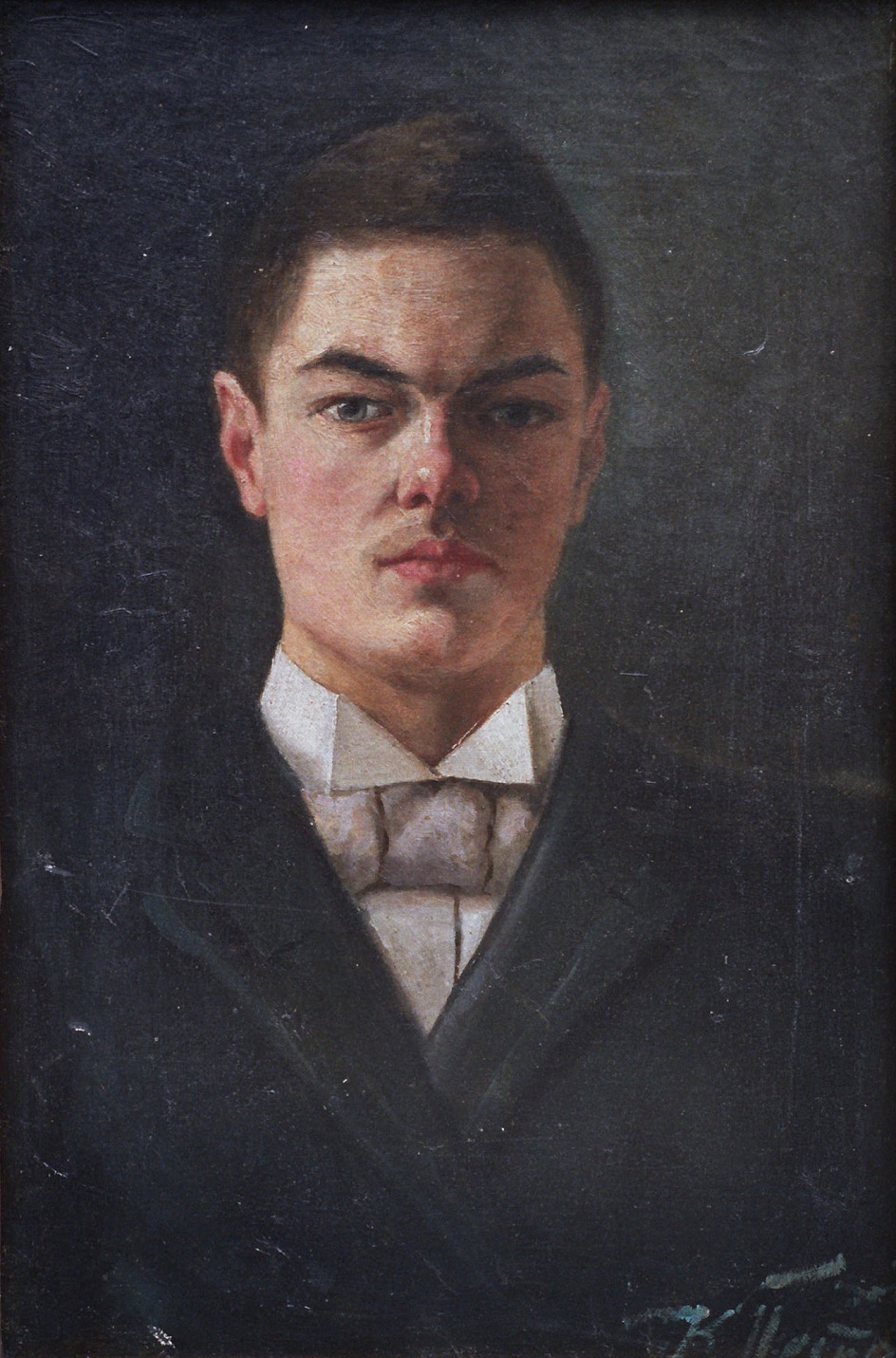
Kuzma Sergeyevich Petrov-Vodkin (Russian: Кузьма Сергеевич Петров-Водкин), a Russian painter, synthesized various traditions of global art, crafting a unique and deeply personal visual language. Born in 1878 in Khvalynsk, Saratov oblast, Russian Empire, Petrov-Vodkin is celebrated for his innovative approach to perspective, color, and composition, which positioned him as a pivotal figure in the art world of his time. He passed away in 1939 in Leningrad, now known as St. Petersburg, Russia.
Petrov-Vodkin's education in the arts took him from the Baron Stieglits School in Saint Petersburg to the Moscow School of Painting, Sculpture, and Architecture, where he was mentored by notable artists such as Valentin Serov. His studies abroad, including in Munich under Anton Ažbe, further enriched his artistic development. Notably, his marriage to Maria Jovanovic in Paris in 1906 marked a significant personal chapter, providing him with a lifelong companion and collaborator.
His work is distinguished by the use of "spherical perspective," a technique that distorts the drawing to emphasize the globe's curvature, making the viewer feel simultaneously distant and intimately close to the subject. This method, influenced by Byzantine iconography's inverted perspective, is evident in works like "Death of a Commissar" and "In the Line of Fire." Petrov-Vodkin's palette darkened over time, and his subjects diversified to include still life and portraiture, reflecting a broader exploration of theme and form. Despite facing health challenges, including pulmonary tuberculosis which limited his painting in later years, he remained prolific in other creative avenues, including literature, where his semi-autobiographical works are held in high regard.
His legacy is enshrined in the Russian Museum in St. Petersburg, which houses the largest collection of his works and dedicates a room to his art in their permanent exhibition. Additionally, a memorial museum in his hometown of Khvalynsk pays tribute to his contributions to Russian and Soviet art.
For collectors and art and antiques experts intrigued by Petrov-Vodkin's profound impact on Russian art, signing up for updates can ensure access to the latest sales and auction events related to his oeuvre. This subscription is a gateway to exploring the depth and breadth of Petrov-Vodkin's artistic achievements and ensuring enthusiasts are well-informed of opportunities to engage with his work.
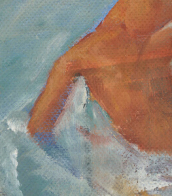

Kuzma Sergeyevich Petrov-Vodkin (Russian: Кузьма Сергеевич Петров-Водкин), a Russian painter, synthesized various traditions of global art, crafting a unique and deeply personal visual language. Born in 1878 in Khvalynsk, Saratov oblast, Russian Empire, Petrov-Vodkin is celebrated for his innovative approach to perspective, color, and composition, which positioned him as a pivotal figure in the art world of his time. He passed away in 1939 in Leningrad, now known as St. Petersburg, Russia.
Petrov-Vodkin's education in the arts took him from the Baron Stieglits School in Saint Petersburg to the Moscow School of Painting, Sculpture, and Architecture, where he was mentored by notable artists such as Valentin Serov. His studies abroad, including in Munich under Anton Ažbe, further enriched his artistic development. Notably, his marriage to Maria Jovanovic in Paris in 1906 marked a significant personal chapter, providing him with a lifelong companion and collaborator.
His work is distinguished by the use of "spherical perspective," a technique that distorts the drawing to emphasize the globe's curvature, making the viewer feel simultaneously distant and intimately close to the subject. This method, influenced by Byzantine iconography's inverted perspective, is evident in works like "Death of a Commissar" and "In the Line of Fire." Petrov-Vodkin's palette darkened over time, and his subjects diversified to include still life and portraiture, reflecting a broader exploration of theme and form. Despite facing health challenges, including pulmonary tuberculosis which limited his painting in later years, he remained prolific in other creative avenues, including literature, where his semi-autobiographical works are held in high regard.
His legacy is enshrined in the Russian Museum in St. Petersburg, which houses the largest collection of his works and dedicates a room to his art in their permanent exhibition. Additionally, a memorial museum in his hometown of Khvalynsk pays tribute to his contributions to Russian and Soviet art.
For collectors and art and antiques experts intrigued by Petrov-Vodkin's profound impact on Russian art, signing up for updates can ensure access to the latest sales and auction events related to his oeuvre. This subscription is a gateway to exploring the depth and breadth of Petrov-Vodkin's artistic achievements and ensuring enthusiasts are well-informed of opportunities to engage with his work.
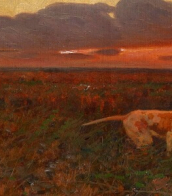

Kuzma Sergeyevich Petrov-Vodkin (Russian: Кузьма Сергеевич Петров-Водкин), a Russian painter, synthesized various traditions of global art, crafting a unique and deeply personal visual language. Born in 1878 in Khvalynsk, Saratov oblast, Russian Empire, Petrov-Vodkin is celebrated for his innovative approach to perspective, color, and composition, which positioned him as a pivotal figure in the art world of his time. He passed away in 1939 in Leningrad, now known as St. Petersburg, Russia.
Petrov-Vodkin's education in the arts took him from the Baron Stieglits School in Saint Petersburg to the Moscow School of Painting, Sculpture, and Architecture, where he was mentored by notable artists such as Valentin Serov. His studies abroad, including in Munich under Anton Ažbe, further enriched his artistic development. Notably, his marriage to Maria Jovanovic in Paris in 1906 marked a significant personal chapter, providing him with a lifelong companion and collaborator.
His work is distinguished by the use of "spherical perspective," a technique that distorts the drawing to emphasize the globe's curvature, making the viewer feel simultaneously distant and intimately close to the subject. This method, influenced by Byzantine iconography's inverted perspective, is evident in works like "Death of a Commissar" and "In the Line of Fire." Petrov-Vodkin's palette darkened over time, and his subjects diversified to include still life and portraiture, reflecting a broader exploration of theme and form. Despite facing health challenges, including pulmonary tuberculosis which limited his painting in later years, he remained prolific in other creative avenues, including literature, where his semi-autobiographical works are held in high regard.
His legacy is enshrined in the Russian Museum in St. Petersburg, which houses the largest collection of his works and dedicates a room to his art in their permanent exhibition. Additionally, a memorial museum in his hometown of Khvalynsk pays tribute to his contributions to Russian and Soviet art.
For collectors and art and antiques experts intrigued by Petrov-Vodkin's profound impact on Russian art, signing up for updates can ensure access to the latest sales and auction events related to his oeuvre. This subscription is a gateway to exploring the depth and breadth of Petrov-Vodkin's artistic achievements and ensuring enthusiasts are well-informed of opportunities to engage with his work.
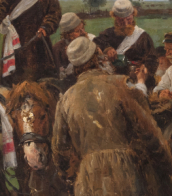

Kuzma Sergeyevich Petrov-Vodkin (Russian: Кузьма Сергеевич Петров-Водкин), a Russian painter, synthesized various traditions of global art, crafting a unique and deeply personal visual language. Born in 1878 in Khvalynsk, Saratov oblast, Russian Empire, Petrov-Vodkin is celebrated for his innovative approach to perspective, color, and composition, which positioned him as a pivotal figure in the art world of his time. He passed away in 1939 in Leningrad, now known as St. Petersburg, Russia.
Petrov-Vodkin's education in the arts took him from the Baron Stieglits School in Saint Petersburg to the Moscow School of Painting, Sculpture, and Architecture, where he was mentored by notable artists such as Valentin Serov. His studies abroad, including in Munich under Anton Ažbe, further enriched his artistic development. Notably, his marriage to Maria Jovanovic in Paris in 1906 marked a significant personal chapter, providing him with a lifelong companion and collaborator.
His work is distinguished by the use of "spherical perspective," a technique that distorts the drawing to emphasize the globe's curvature, making the viewer feel simultaneously distant and intimately close to the subject. This method, influenced by Byzantine iconography's inverted perspective, is evident in works like "Death of a Commissar" and "In the Line of Fire." Petrov-Vodkin's palette darkened over time, and his subjects diversified to include still life and portraiture, reflecting a broader exploration of theme and form. Despite facing health challenges, including pulmonary tuberculosis which limited his painting in later years, he remained prolific in other creative avenues, including literature, where his semi-autobiographical works are held in high regard.
His legacy is enshrined in the Russian Museum in St. Petersburg, which houses the largest collection of his works and dedicates a room to his art in their permanent exhibition. Additionally, a memorial museum in his hometown of Khvalynsk pays tribute to his contributions to Russian and Soviet art.
For collectors and art and antiques experts intrigued by Petrov-Vodkin's profound impact on Russian art, signing up for updates can ensure access to the latest sales and auction events related to his oeuvre. This subscription is a gateway to exploring the depth and breadth of Petrov-Vodkin's artistic achievements and ensuring enthusiasts are well-informed of opportunities to engage with his work.


Kuzma Sergeyevich Petrov-Vodkin (Russian: Кузьма Сергеевич Петров-Водкин), a Russian painter, synthesized various traditions of global art, crafting a unique and deeply personal visual language. Born in 1878 in Khvalynsk, Saratov oblast, Russian Empire, Petrov-Vodkin is celebrated for his innovative approach to perspective, color, and composition, which positioned him as a pivotal figure in the art world of his time. He passed away in 1939 in Leningrad, now known as St. Petersburg, Russia.
Petrov-Vodkin's education in the arts took him from the Baron Stieglits School in Saint Petersburg to the Moscow School of Painting, Sculpture, and Architecture, where he was mentored by notable artists such as Valentin Serov. His studies abroad, including in Munich under Anton Ažbe, further enriched his artistic development. Notably, his marriage to Maria Jovanovic in Paris in 1906 marked a significant personal chapter, providing him with a lifelong companion and collaborator.
His work is distinguished by the use of "spherical perspective," a technique that distorts the drawing to emphasize the globe's curvature, making the viewer feel simultaneously distant and intimately close to the subject. This method, influenced by Byzantine iconography's inverted perspective, is evident in works like "Death of a Commissar" and "In the Line of Fire." Petrov-Vodkin's palette darkened over time, and his subjects diversified to include still life and portraiture, reflecting a broader exploration of theme and form. Despite facing health challenges, including pulmonary tuberculosis which limited his painting in later years, he remained prolific in other creative avenues, including literature, where his semi-autobiographical works are held in high regard.
His legacy is enshrined in the Russian Museum in St. Petersburg, which houses the largest collection of his works and dedicates a room to his art in their permanent exhibition. Additionally, a memorial museum in his hometown of Khvalynsk pays tribute to his contributions to Russian and Soviet art.
For collectors and art and antiques experts intrigued by Petrov-Vodkin's profound impact on Russian art, signing up for updates can ensure access to the latest sales and auction events related to his oeuvre. This subscription is a gateway to exploring the depth and breadth of Petrov-Vodkin's artistic achievements and ensuring enthusiasts are well-informed of opportunities to engage with his work.


